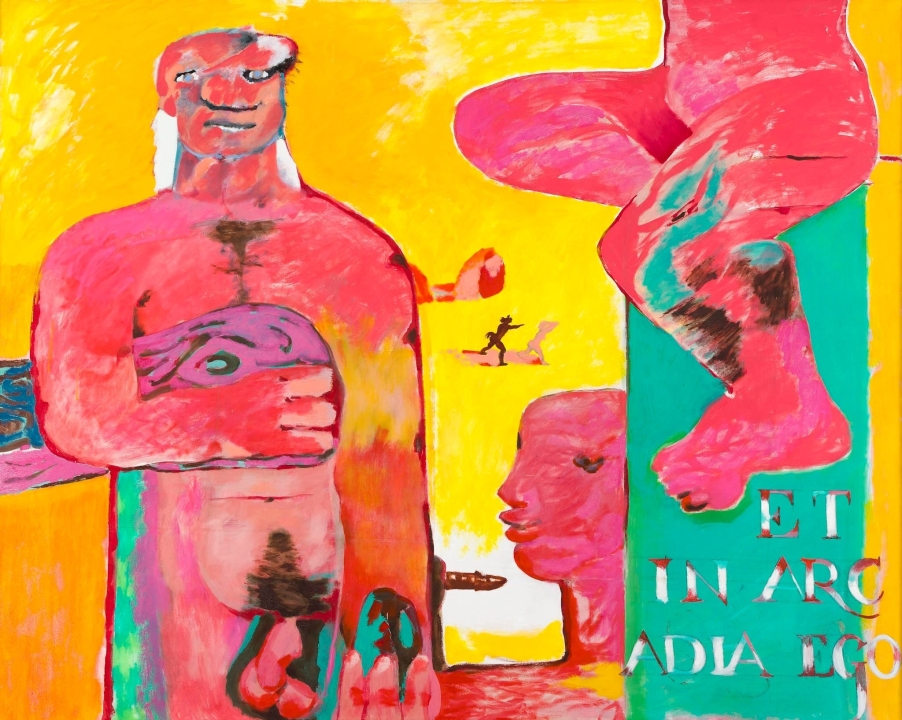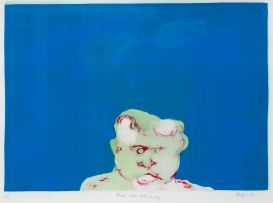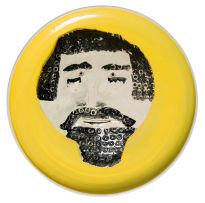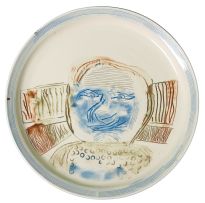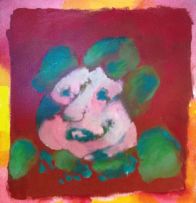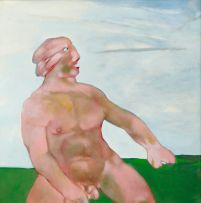Important South African and International Art and Books
Live Auction, 11 June 2012
Evening Sale
Incl. Buyer's Premium & VAT
About this Item
signed, dated 1990/2 and inscribed with the title on the reverse
Notes
In his provocative essay for Hodgins' monograph, Kendell Geers identifies this as one of the artist's more remarkable paintings, locating it within a trajectory beyond his earliest investigations:
These early tentative explorations soon gave way to the self-confident explosion of paint and form that today sets Hodgins apart from any other painter. The dark outlines can also be understood metaphorically as art historical convention, the languages and canons against which Hodgins has rebelled and which, with his palette, he laid waste.
Being both verb and adjective, Robert Hodgins' oeuvre is best understood in terms of play - the hide-and-seek play of forms, a game of eternal youth, a theatre of paint, the coy playfulness of meaning trapped behind mercurial forms. Witness the way he reinterprets Poussin's Arcadian Shepherds and the epitaph Et in Arcadia Ego (page 65), which has perplexed historians ever since it was completed. Even in Arcadia there is death, even in perfection there is a glitch caused by human error ... the survival tactics of yesterday's 'warrior' reinventing himself as today's corporate Jogger.1
The intellectual references together with the impressive scale and refreshing use of colour contrasts ranging from hot pinks to searing yellows tempered by cool turquoise, mutually reinforce the painting's striking impact.
1 Kendell Geers, 'Undiscovered at 82', Robert Hodgins, Tafelberg Publishers, Cape Town, 2002, page 67.
Literature
Robert Hodgins, Tafelberg, Cape Town, 2002, page 65, illustrated in colour.
